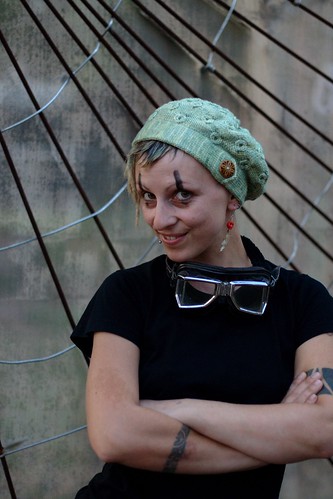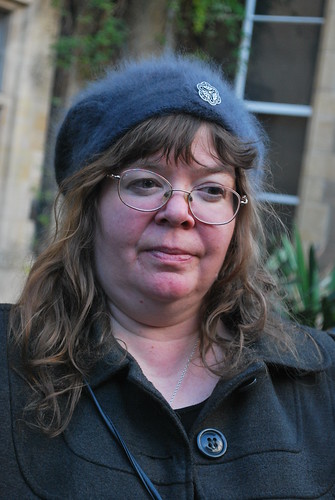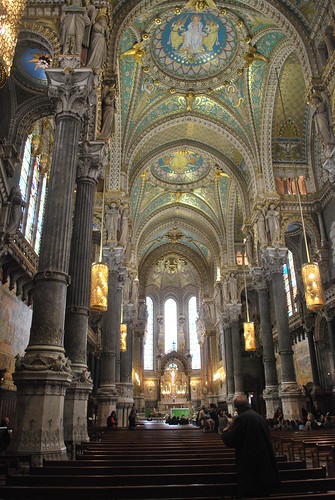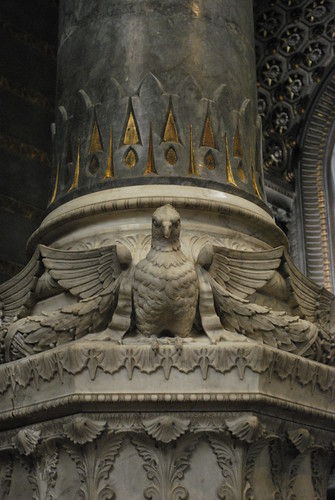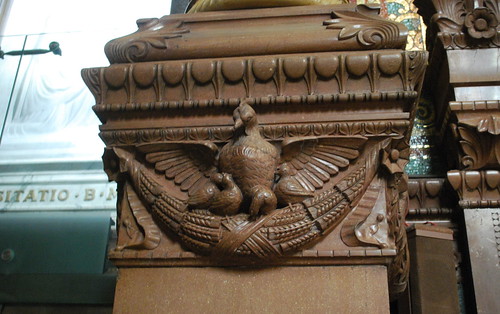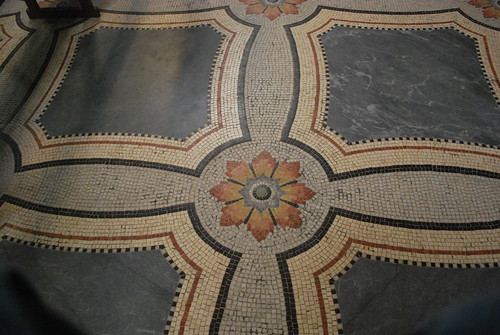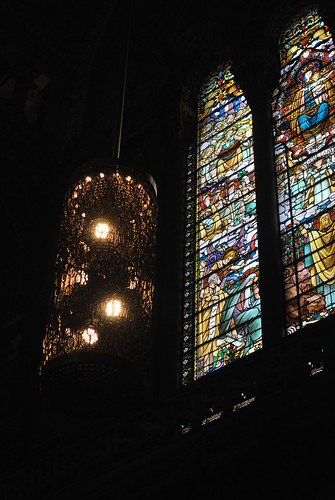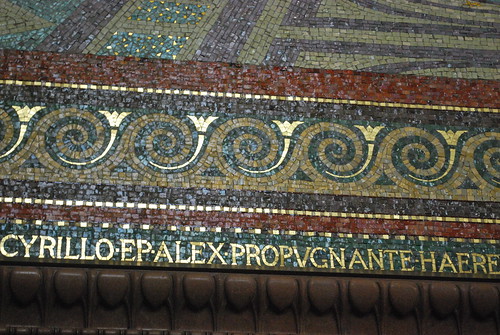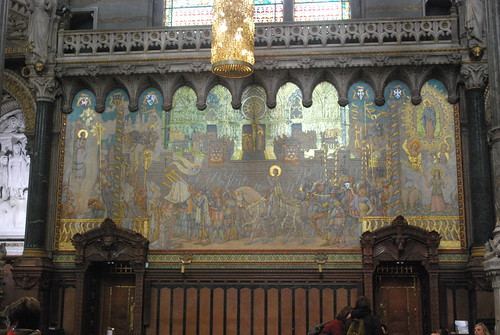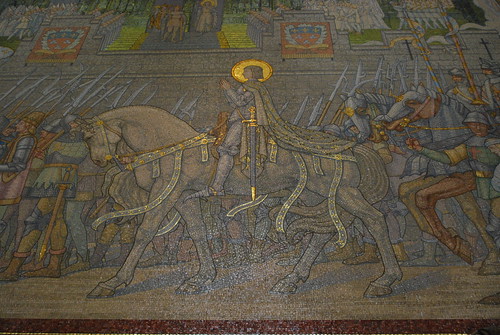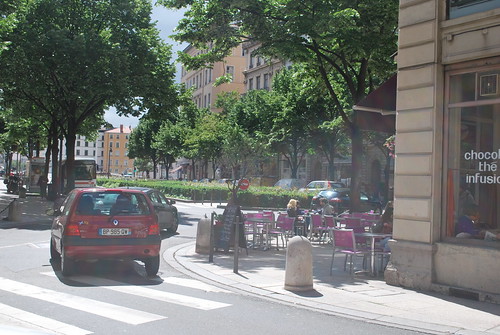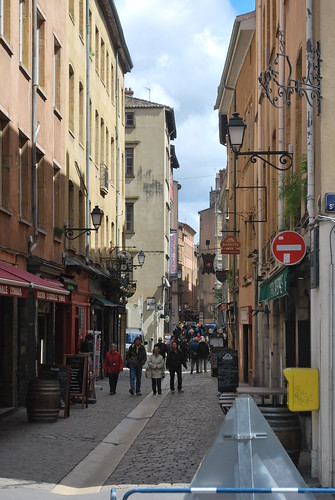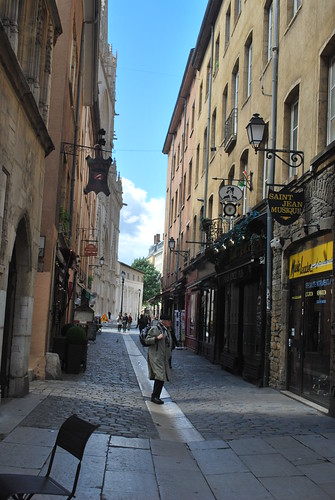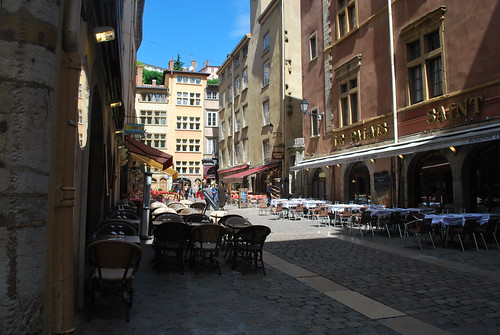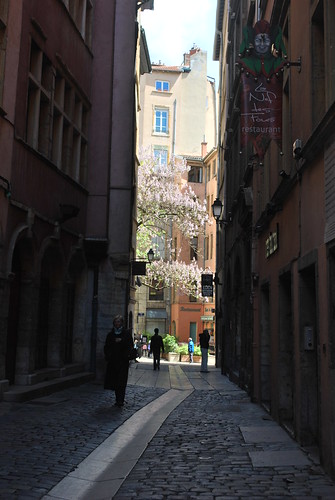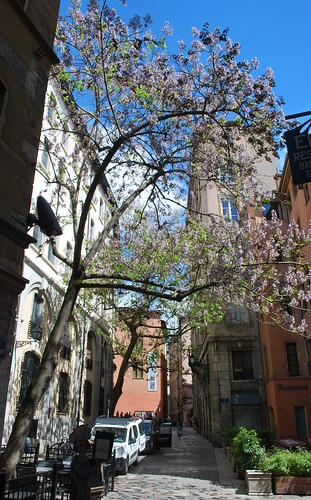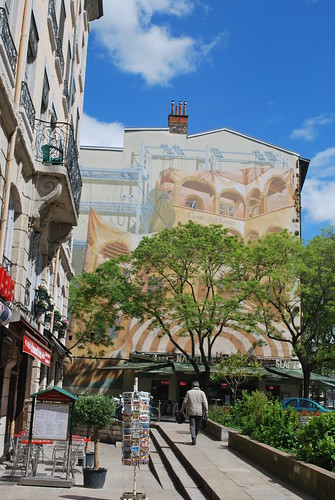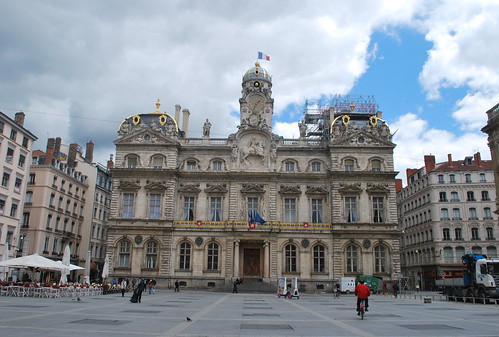Black diamond, by Martin Walker. London: Quercus, 2010.
An Inspector Bruno novel. In this one, Périgord's most prized product, the truffle, is threatened by reports of adulteration at the local market. At the same time, the horrific murder of a local truffle-hunter drags Bruno into French-Algerian history, and past and present crimes intertwine. As ever, there are some great characters here, and Walker keeps a light touch while talking about serious subjects. I'm very glad there are a few more of these to read before I catch up...
Shattered, by Dick Francis [audiobook]. Read by Tony Britton. Bath: Chivers/BBC Audiobooks, 2000.
For those who've read all these, this is The One With The Glassblower. I was spending the weekend at the sewing machine, and wanted something I'd already read - and Tony Britton is such a consummate reader of Francis... As it was - I really can't remember reading this one at all, so it was a pleasant surprise! Gerard Logan, the glassblower, goes to Cheltenham Races with his friend jockey Martin Stukely on Millennium Eve; Martin is crushed by his horse and killed, and his valet hands his saddle and a videotape to Gerard. That's when everything goes a bit mad - Gerard's workshop is burgled, as is his house and Martin's, and the tape is stolen without his having an idea of what the thieves wanted. This is vintage Francis - you learn interesting things about glassblowing, it rattles along at racing pace, and as ever Britton's reading is excellent.
The search for Richard III: the king's grave, by Phillipa Langley and Michael Jones. London: John Murray, 2013.
This is a very readable account both of the short kingship of Richard III and of the recent dig which uncovered his bones under a social services car park in Leicester. It's arranged in alternate chapters of straight history and fundraising/archaeology/fannishness. Michael Jones seems to play it quite straight with the history - he's sympathetic to Richard but also concedes his ruthlessness in some circumstances. Phillipa Langley is the first to admit her partiality, but her account of how the dig was arranged is fascinating for anyone (like me) who's worked as a volunteer around an established dig; I could sort of have done without her repeated stressing of her intuition as to where the body was buried, but as she turned out to be right, and as her obsession was a large part of getting the job done in the first place, fair play to her!
The people's songs, by Stuart Maconie. London: Ebury Press, 2013.
I'd forgotten to review this, until I had a short exchange with the chap himself on Twitter earlier and realised that this had had to go back to the library sharpish at the time because there were other people in the queue behind me, so it hadn't hung around on the review pile... This is the book of the recent Radio 4 series - because this is arranged chronologically, and the series wasn't, and I managed only to dip into the series and catch up with more episodes on iPlayer, I'm not quite sure whether these are the scripts for the series slightly elaborated and without the additional voices of people who remember the era, or not. But actually, that won't matter now the series has ended; it stands up as a book. What you get here is 50 short essays on life in Britain during and after the Second World War, each introduced by one representative track. So the Asian experience in the UK is represented by Brimful of Asha; pop's social conscience by Do They Know It's Christmas?; Britain's changing climate for LGBT people by Smalltown Boy, etc... This could be an unsophisticated way of looking at the subject - but it's Maconie, so obviously it's way better than that. These are thoughtful, thought-provoking, entertaining pieces; and it goes without saying that there's a lot of humour, too.
The detective's daughter, by Lesley Thomson. Kindle edition.
Terry Darnell, a detective who's carried on investigating a twenty-year-old crime into his retirement, is found dead outside a Co-Op in the town where the victim was buried. The death's due to natural causes, but his daughter Stella has to deal with his effects and with clearing out his house, and becomes curious despite herself in the father she's been detached from for most of her life. As she becomes more and more interested in the mystery, her entirely organised life (running a cleaning business, living in a brand-new spotless flat, dumping the boyfriend when it's all too complicated) also begins to disintegrate, and she makes the acquaintance of Jack, a superb cleaner but a deeply private man... I enjoyed this, despite finding the main character almost entirely unsympathetic throughout, and despite finding a couple of holes in the plot difficult to deal with. Definitely worth reading.
Saturday, December 14, 2013
Friday, December 13, 2013
2013 books, #91-95
Death's door, by Jim Kelly [audiobook]. Read by Roger May. Oxford: Isis, 2012.
On a hot August day in 1994, 76 holidaymakers travel to an island off the North Norfolk coast; only 75 come back. 20 years later, the cold case is revived with the aid of DNA evidence off a beach towel, and the survivors are invited for a mass screening. One of them, Marianne Osborne, is found dead in her bed. Is there a link? As ever, the North Norfolk coast is like another character in this book featuring DI Shaw and DS Valentine, and the finale comes as a genuine surprise.
I am half sick of shadows, by Alan Bradley. [S.l.]: Anchor Canada, 2012.
Flavia de Luce, eleven-year-old chemist and amateur sleuth, is engaged in a plot to trap Santa Claus in the chimneys of her family's crumbling pile at Buckford. Meanwhile, her father has found a way of shoring up the family's fortunes by renting out the stately home to a visiting film company, including the star Phyllis Wyvern. The whole village turns up to see a charity show at Buckford, and is then snowed in; and in the morning, Ms Wyvern is found dead. Flavia investigates. This is a lovely book - Flavia shouldn't be an engaging character, but her combination of innocence and bookish knowledge are quite delightful, and the rest of the cast of characters are quite fascinating.
Faithless, by Karin Slaughter [audiobook]. Read by LJ Ganser. Rearsby, Leics.: Clipper, 2006.
Sara Linton and Jeffrey Tolliver are walking in the woods when they stumble (literally) upon a buried box which contains the body of a teenage girl; it's obvious that the girl was buried alive. The girl's family are part of an isolated religious community, one which likes to keep its secrets to itself. Also investigating is Lena Adams, a woman who has secrets of her own to hide. As ever, Slaughter writes a well-constructed, fast-paced thriller with some interesting characters.
Winter in Madrid, by C J Sansom. Kindle edition.
Harry Brett, a traumatised Dunkirk veteran, is sent back to Madrid as a spy; previously, he'd been there during the Spanish Civil War. His quarry is Sandy Forsyth, a former schoolmate. Sandy's "wife" Barbara has her own secrets - she's discovered that her ex-boyfriend Bernie Piper, a soldier with the International Brigades, may still be alive in a prison camp, and is determined to rescue him. This is a dense, intertwined novel, and very moving in parts. I found the ending somewhat disappointing, but it's a good read for all that.
The death of Lucy Kyte, by Nicola Upson [audiobook]. Read by Sandra Duncan. Rearsby, Leics.: Clipper, 2013.
Josephine Tey has inherited her godmother's house in Suffolk; her godmother was an actress who specialised in playing Maria Martin, the victim of the Murder in the Red Barn, in melodrama. The house overlooks the site of the Red Barn, and there's something very odd about it. Josephine begins to investigate, and becomes entwined in the life of both her godmother and the writer of a mysterious diary. I love these books, and the combination of a historical mystery and a real-life figure is something I think Ms Tey would approve...
On a hot August day in 1994, 76 holidaymakers travel to an island off the North Norfolk coast; only 75 come back. 20 years later, the cold case is revived with the aid of DNA evidence off a beach towel, and the survivors are invited for a mass screening. One of them, Marianne Osborne, is found dead in her bed. Is there a link? As ever, the North Norfolk coast is like another character in this book featuring DI Shaw and DS Valentine, and the finale comes as a genuine surprise.
I am half sick of shadows, by Alan Bradley. [S.l.]: Anchor Canada, 2012.
Flavia de Luce, eleven-year-old chemist and amateur sleuth, is engaged in a plot to trap Santa Claus in the chimneys of her family's crumbling pile at Buckford. Meanwhile, her father has found a way of shoring up the family's fortunes by renting out the stately home to a visiting film company, including the star Phyllis Wyvern. The whole village turns up to see a charity show at Buckford, and is then snowed in; and in the morning, Ms Wyvern is found dead. Flavia investigates. This is a lovely book - Flavia shouldn't be an engaging character, but her combination of innocence and bookish knowledge are quite delightful, and the rest of the cast of characters are quite fascinating.
Faithless, by Karin Slaughter [audiobook]. Read by LJ Ganser. Rearsby, Leics.: Clipper, 2006.
Sara Linton and Jeffrey Tolliver are walking in the woods when they stumble (literally) upon a buried box which contains the body of a teenage girl; it's obvious that the girl was buried alive. The girl's family are part of an isolated religious community, one which likes to keep its secrets to itself. Also investigating is Lena Adams, a woman who has secrets of her own to hide. As ever, Slaughter writes a well-constructed, fast-paced thriller with some interesting characters.
Winter in Madrid, by C J Sansom. Kindle edition.
Harry Brett, a traumatised Dunkirk veteran, is sent back to Madrid as a spy; previously, he'd been there during the Spanish Civil War. His quarry is Sandy Forsyth, a former schoolmate. Sandy's "wife" Barbara has her own secrets - she's discovered that her ex-boyfriend Bernie Piper, a soldier with the International Brigades, may still be alive in a prison camp, and is determined to rescue him. This is a dense, intertwined novel, and very moving in parts. I found the ending somewhat disappointing, but it's a good read for all that.
The death of Lucy Kyte, by Nicola Upson [audiobook]. Read by Sandra Duncan. Rearsby, Leics.: Clipper, 2013.
Josephine Tey has inherited her godmother's house in Suffolk; her godmother was an actress who specialised in playing Maria Martin, the victim of the Murder in the Red Barn, in melodrama. The house overlooks the site of the Red Barn, and there's something very odd about it. Josephine begins to investigate, and becomes entwined in the life of both her godmother and the writer of a mysterious diary. I love these books, and the combination of a historical mystery and a real-life figure is something I think Ms Tey would approve...
Wednesday, November 06, 2013
2013 books, #86-90
The cemetery of secrets, by David Hewson. London: Pan 2009.
Two intertwined narratives here from the start - one from 1733 and one from the present day, both set in Venice and both featuring the same Guarneri violin. In the present, Daniel Forster arrives in Venice from Oxford to work for the summer in the library of a private collector, and becomes involved in a plan to buy a stolen violin from a petty thief. In 1733, Lorenzo arrives to become apprenticed to a printer who works with Vivaldi and other contemporary musicians. The two stories intertwine in music, love, criminality and cultural differences; and I was left with melancholy over how little some things, particularly the exploitation of young and beautiful women, have changed. Highly recommended, though.
The final detail, by Harlen Coben. London: Orion, 2005.
A Myron Bolitar book. Myron, knocked sideways by the outcome of his previous case and the breakup of his relationship, escapes for an interlude of meaningless sex on a Caribbean island. Unfortunately, in the interim his business partner Esperanza has been arrested for the murder of one of their most longstanding clients, Clu Haid. Esperanza's not talking; Myron can't really believe she's murdered anyone, but he also doesn't understand why she's so tight-lipped. And then of course there's Win, Myron's real long-time partner, scary patrician par excellence. Well up to the usual standard with switchback twists and turns towards the end.
Telling tales, by Ann Cleeves [audiobook]. Read by Julia Franklin. Whitley Bay: Soundings, 2008.
I'd seen a couple of the Vera series on catch-up TV or at my parents' - this was the first time I'd listened to one, and it was very enjoyable. Jeanie Lang, convicted of the murder of Abigail Mantel 10 years before, kills herself in prison just before being told that her alibi has actually been confirmed and she's about to be released. Vera is called in to re-investigate this Yorkshire murder, and starts stirring up all sorts of old trouble. Somewhere, Abigail's murderer is still around, and there are several people with something to hide. Really enjoyed this - I may have to postpone seeing any more of the TV episodes based on books until I've read the books.
Dream of darkness, by Reginald Hill [audiobook]. read by Seán Barrett. Oxford: Isis, 2010. Originally published in 1991.
Sairey Ellis's father is writing his memoirs about his career as a diplomat in in Kenya and Uganda; meanwhile Sairey, aged 18, is haunted by nightmares of seeing her mother's body in a coffin. One night, she goes out into the square outside her house and meets a beautiful, injured boy who later turns out to have a connection with her family. Hill brings all his customary skill to weave a fascinating, scary tale around real events such as the Kikuyu uprising, national security, torture and betrayal in wartime, with what I found a very unexpected ending. This obviously isn't a long book - it only makes 7 hours' audiobook reading - but there's a heck of a lot in it.
Crooked letter, crooked letter, by Tom Franklin. London: Pan, 2011.
This is a wonderful book. I seem to have had a good year for excellent books, but this is one of the best. The author had me by page 8, when he shoots the only character we've met so far. Up to that point, Larry's someone I sort of like. For another while, you find out he's the town bogeyman, suspected of the death of a young girl after an evening at a drive-in movie... And then the guy investigating his case turns out to be either the best or the worst person to give Larry a fair hearing. It's a tale of friendship, and danger, and racial politics. The title, we're told in the epigraph, comes from a spelling rhyme, and that really works; while this book is all about adults, the relationships and attitudes which shape it werew formed in childhood. This has a detective novel structure, and it's a fine Southern novel within that structure; if you enjoyed To Kill a Mockingbird, or anything by Joshilyn Jackson, you'd love this book.
Two intertwined narratives here from the start - one from 1733 and one from the present day, both set in Venice and both featuring the same Guarneri violin. In the present, Daniel Forster arrives in Venice from Oxford to work for the summer in the library of a private collector, and becomes involved in a plan to buy a stolen violin from a petty thief. In 1733, Lorenzo arrives to become apprenticed to a printer who works with Vivaldi and other contemporary musicians. The two stories intertwine in music, love, criminality and cultural differences; and I was left with melancholy over how little some things, particularly the exploitation of young and beautiful women, have changed. Highly recommended, though.
The final detail, by Harlen Coben. London: Orion, 2005.
A Myron Bolitar book. Myron, knocked sideways by the outcome of his previous case and the breakup of his relationship, escapes for an interlude of meaningless sex on a Caribbean island. Unfortunately, in the interim his business partner Esperanza has been arrested for the murder of one of their most longstanding clients, Clu Haid. Esperanza's not talking; Myron can't really believe she's murdered anyone, but he also doesn't understand why she's so tight-lipped. And then of course there's Win, Myron's real long-time partner, scary patrician par excellence. Well up to the usual standard with switchback twists and turns towards the end.
Telling tales, by Ann Cleeves [audiobook]. Read by Julia Franklin. Whitley Bay: Soundings, 2008.
I'd seen a couple of the Vera series on catch-up TV or at my parents' - this was the first time I'd listened to one, and it was very enjoyable. Jeanie Lang, convicted of the murder of Abigail Mantel 10 years before, kills herself in prison just before being told that her alibi has actually been confirmed and she's about to be released. Vera is called in to re-investigate this Yorkshire murder, and starts stirring up all sorts of old trouble. Somewhere, Abigail's murderer is still around, and there are several people with something to hide. Really enjoyed this - I may have to postpone seeing any more of the TV episodes based on books until I've read the books.
Dream of darkness, by Reginald Hill [audiobook]. read by Seán Barrett. Oxford: Isis, 2010. Originally published in 1991.
Sairey Ellis's father is writing his memoirs about his career as a diplomat in in Kenya and Uganda; meanwhile Sairey, aged 18, is haunted by nightmares of seeing her mother's body in a coffin. One night, she goes out into the square outside her house and meets a beautiful, injured boy who later turns out to have a connection with her family. Hill brings all his customary skill to weave a fascinating, scary tale around real events such as the Kikuyu uprising, national security, torture and betrayal in wartime, with what I found a very unexpected ending. This obviously isn't a long book - it only makes 7 hours' audiobook reading - but there's a heck of a lot in it.
Crooked letter, crooked letter, by Tom Franklin. London: Pan, 2011.
This is a wonderful book. I seem to have had a good year for excellent books, but this is one of the best. The author had me by page 8, when he shoots the only character we've met so far. Up to that point, Larry's someone I sort of like. For another while, you find out he's the town bogeyman, suspected of the death of a young girl after an evening at a drive-in movie... And then the guy investigating his case turns out to be either the best or the worst person to give Larry a fair hearing. It's a tale of friendship, and danger, and racial politics. The title, we're told in the epigraph, comes from a spelling rhyme, and that really works; while this book is all about adults, the relationships and attitudes which shape it werew formed in childhood. This has a detective novel structure, and it's a fine Southern novel within that structure; if you enjoyed To Kill a Mockingbird, or anything by Joshilyn Jackson, you'd love this book.
Friday, October 11, 2013
2013 books, #81-85
The cuckoo's calling, by Robert Galbraith [audiobook]. Read by Robert Glenister. Oxford: Isis, 2013.
I'm not sure I'd have come across this one if it hadn't been for the news that Robert Galbraith and JK Rowling were the same author; and that would've been a shame. This is an excellent detective novel with two immensely likeable characters in Cormoran Strike and sidekick Robin (yes). Strike, an ex-military policeman invalided out of the Army after losing a lower leg in Afghanistan, is engaged by John Bristow to investigate the death of Bristow's sister Lula; the police believe Lula's death to be suicide but the client is unconvinced. The plot twists and turns nicely, and Strike navigates Lula's world of extreme glamour and superficiality to uncover the truth. Now that I know it's by Rowling, I can recognise some of the concerns - there's a lot about the intrusion of the media into private life, compassion for the unfortunate and poor combined with a dislike of the thoughtlessly rich, and a couple of digs about the demonisation of Gordon Brown - but I'm not sure I'd have picked up the similarities otherwise. I really hope the early revelation of Galbraith's alter ego won't dissuade Rowling from producing more of this series - I really want to know where this huge, scruffy, profoundly decent man goes next.
Bones are forever, by Kathy Reichs [audiobook]. Read by Linda Emond. [S.l.]: RH Audio, 2012.
The bones of a baby are found behind a bathroom cabinet in a squalid Montreal apartment. Tempe Brennan is brought in, and soon discovers two more babies' mummified bodies. The last resident of the apartment was a woman with at least three aliases; when her path is tracked back to Alberta, there are more grounds for suspicion. I thought this was a better book than the previous couple of Tempe Brennan stories; unfortunately, damage on the last CD in the set means I only have the sketchiest idea of what happened in the end. If I see it in the library, I'll have a flick through the last few chapters...
XO, by Jeffery Deaver [audiobook]. Read by Marin Ireland. Rearsby, Leics.: WF Howes, 2012.
Kayleigh Towns is a successful country singer, but is increasingly worried about a fan, Edwin Sharp, who is stalking her despite letters from her lawyers. When an accident happens at a concert venue in her home town, and Edwin appears immediately afterwards, she begins to panic. Kathryn Dance, visiting the area to record some Mexican musicians, is a friend of Kayleigh - she's also an investigator with the California Bureau of Investigation, and when a murder happens in Kayleigh's entourage, she's on the scene immediately. This is a typical Deaver book with loads of twists and turns, and a cameo appearance by Lincoln Rhyme and Amelia Sachs; there are several endings, each at least as plausible as the others. I didn't really like the first Kathryn Dance novel, but this one is much more enjoyable.
Blue lightning, by Anne Cleeves. London: Macmillan, 2010.
Bloody hell. OK.
So, let's go back to the beginning. The manager of a bird observatory on Fair Isle is found dead, just when Jimmy Perez is on the island introducing his fiancée Fran to his parents. Jimmy is called in to the investigation, and realises he's out of his depth from the beginning. This is tightly plotted, and has a completely shocking ending; I'm really not sure where she's going to go after this one.
Death under sail, by CP Snow. London: Stratus, 2000. Originally published 1932.
Yes; that CP Snow, Strangers and brothers and all that. This is an earlier book, and very much in the Dornford Yates mode of thrillers involving racy but idealised women, and chaps who can take a month off to go sailing. It follows the detective novel mode while being completely self-conscious about it; I'd have preferred slightly less snark about Sayers given how much was taken from her novels. But it's good; really very good; and terrifically interesting as a period piece.
I'm not sure I'd have come across this one if it hadn't been for the news that Robert Galbraith and JK Rowling were the same author; and that would've been a shame. This is an excellent detective novel with two immensely likeable characters in Cormoran Strike and sidekick Robin (yes). Strike, an ex-military policeman invalided out of the Army after losing a lower leg in Afghanistan, is engaged by John Bristow to investigate the death of Bristow's sister Lula; the police believe Lula's death to be suicide but the client is unconvinced. The plot twists and turns nicely, and Strike navigates Lula's world of extreme glamour and superficiality to uncover the truth. Now that I know it's by Rowling, I can recognise some of the concerns - there's a lot about the intrusion of the media into private life, compassion for the unfortunate and poor combined with a dislike of the thoughtlessly rich, and a couple of digs about the demonisation of Gordon Brown - but I'm not sure I'd have picked up the similarities otherwise. I really hope the early revelation of Galbraith's alter ego won't dissuade Rowling from producing more of this series - I really want to know where this huge, scruffy, profoundly decent man goes next.
Bones are forever, by Kathy Reichs [audiobook]. Read by Linda Emond. [S.l.]: RH Audio, 2012.
The bones of a baby are found behind a bathroom cabinet in a squalid Montreal apartment. Tempe Brennan is brought in, and soon discovers two more babies' mummified bodies. The last resident of the apartment was a woman with at least three aliases; when her path is tracked back to Alberta, there are more grounds for suspicion. I thought this was a better book than the previous couple of Tempe Brennan stories; unfortunately, damage on the last CD in the set means I only have the sketchiest idea of what happened in the end. If I see it in the library, I'll have a flick through the last few chapters...
XO, by Jeffery Deaver [audiobook]. Read by Marin Ireland. Rearsby, Leics.: WF Howes, 2012.
Kayleigh Towns is a successful country singer, but is increasingly worried about a fan, Edwin Sharp, who is stalking her despite letters from her lawyers. When an accident happens at a concert venue in her home town, and Edwin appears immediately afterwards, she begins to panic. Kathryn Dance, visiting the area to record some Mexican musicians, is a friend of Kayleigh - she's also an investigator with the California Bureau of Investigation, and when a murder happens in Kayleigh's entourage, she's on the scene immediately. This is a typical Deaver book with loads of twists and turns, and a cameo appearance by Lincoln Rhyme and Amelia Sachs; there are several endings, each at least as plausible as the others. I didn't really like the first Kathryn Dance novel, but this one is much more enjoyable.
Blue lightning, by Anne Cleeves. London: Macmillan, 2010.
Bloody hell. OK.
So, let's go back to the beginning. The manager of a bird observatory on Fair Isle is found dead, just when Jimmy Perez is on the island introducing his fiancée Fran to his parents. Jimmy is called in to the investigation, and realises he's out of his depth from the beginning. This is tightly plotted, and has a completely shocking ending; I'm really not sure where she's going to go after this one.
Death under sail, by CP Snow. London: Stratus, 2000. Originally published 1932.
Yes; that CP Snow, Strangers and brothers and all that. This is an earlier book, and very much in the Dornford Yates mode of thrillers involving racy but idealised women, and chaps who can take a month off to go sailing. It follows the detective novel mode while being completely self-conscious about it; I'd have preferred slightly less snark about Sayers given how much was taken from her novels. But it's good; really very good; and terrifically interesting as a period piece.
Thursday, October 03, 2013
National Poetry Day
It's got to be Heaney, this year.
Westering (in California)
I sit under Rand McNally's
"Official Map of the Moon" -
The colour of frogskin,
Its enlarged pores held
Open and one called
"Pitiscus" at eye level -
Recalling the last night
In Donegal, my shadow
Neat upon the whitewash
From her bony shine,
The cobbles of the yard
Lit pale as eggs.
Summer had been a free fall
Ending there,
The empty amphitheatre
Of the west. Good Friday
We had started out
Past shopblinds drawn on the afternoon,
Cars stilled outside still churches,
Bikes tilting to a wall;
We drove by,
A dwindling interruption
As clappers smacked
On a bare altar
And congregations bent
To the studded crucifix.
What nails dropped out that hour?
Roads unreeled, unreeled
Falling light as casts
Laid down
On shining waters.
Under the moon's stigmata
Six thousand miles away,
I imagine untroubled dust,
A loosening gravity,
Christ weighing by his hands.
Seamus Heaney, from Wintering Out (1972).
Westering (in California)
I sit under Rand McNally's
"Official Map of the Moon" -
The colour of frogskin,
Its enlarged pores held
Open and one called
"Pitiscus" at eye level -
Recalling the last night
In Donegal, my shadow
Neat upon the whitewash
From her bony shine,
The cobbles of the yard
Lit pale as eggs.
Summer had been a free fall
Ending there,
The empty amphitheatre
Of the west. Good Friday
We had started out
Past shopblinds drawn on the afternoon,
Cars stilled outside still churches,
Bikes tilting to a wall;
We drove by,
A dwindling interruption
As clappers smacked
On a bare altar
And congregations bent
To the studded crucifix.
What nails dropped out that hour?
Roads unreeled, unreeled
Falling light as casts
Laid down
On shining waters.
Under the moon's stigmata
Six thousand miles away,
I imagine untroubled dust,
A loosening gravity,
Christ weighing by his hands.
Seamus Heaney, from Wintering Out (1972).
Monday, September 30, 2013
Yarndale
So - for only the second time, I met someone yesterday who knows me entirely through this blog (hello Melanie; I tried to find you through Ravelry but wasn't sure I'd got the right person - message me?!), and was reminded (not by M, she was far too nice) that there's been next to no knitting content for the last few months. I'll maybe talk about that later, in another post.
But I met M at Yarndale; so here's Yarndale.

The night before, the Keighley Travelodge gave me a quiet evening between a visit to family and the Yarndale throng, and let me watch the first episode of this year's Strictly, and a wonderful programme about Nic Jones's return to folk-singing... Didn't find the place the first time, but having detoured mistakenly into an industrial estate I found a woman coming out of Aldi, and she gave me directions... (This is fairly standard for me if I don't have a map, and I didn't really find one I could print out...)
I went to Yarndale by public transport; this seems to have been a good move. Not least because of the yarnstormed Routemaster bus which pulled up at Skipton station entrance just as I was coming out.
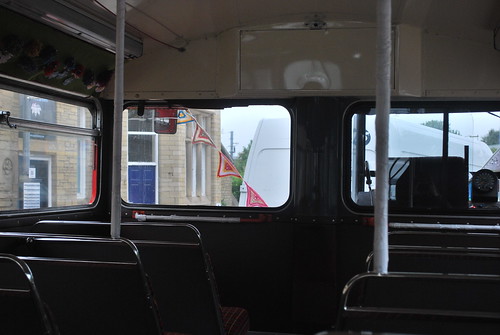
There were felt panels with sheep and flowers where the ads would usually be...

I got there before the doors opened, and this also seems to have been the right thing to do. I was able to stash my bag under the Sparkleduck stand (thanks, Heather and Michael!) and could then dive in quickly and have a look around before it all got too busy.

Lovely wool, lovely fibres, lovely fleece...

And animals. These were the pretty, pretty bunnies from Bigwigs.

Can anyone help me with whose alpacas these are - they were right at the end of the arena away from the exhibition hall, near the back car-park/bus entrance? I marked them off on my programme and then promptly lost it (as seems to happen at most shows; I need to hang it round my neck on a lanyard or something). I meant to go back and get some alpaca fleece from them for spinning... Lovely bright things...
Edited to say thanks to HilltopKatie who also had a beautiful stand there; and has let me know that these are part of the Why Not Alpacas? herd.
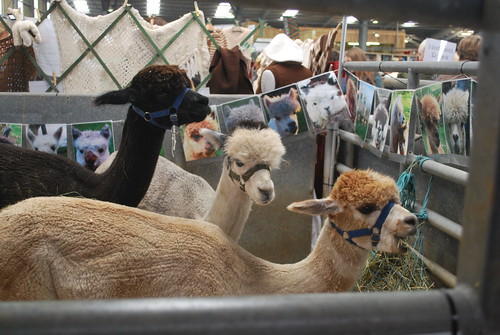
... But the halls definitely filled up quite quickly, and then (speaking as a short person) it became somewhat difficult to see things. Sort of like the Knitting and Stitching Show but without that Huge Horrible Roaring Noise you get in the Great Hall there. There were, to be honest, some pretty rude people there; none of them, I'm sure, in this photo... More elbows than I'm used to at a fibre event other than Ally Pally, anyway!

Once I'd fought my way to one end of the building, and then been sent to the other end for (not-on-the-map) loos, and realised that breakfast wasn't going to happen because the queues were too long, I spotted Colourcraft's stand for acid dyes; after three attempts at taking payment with no signal, they went down the old-fashioned route... Then I was able to meet up with a bunch of people from the Archers group on Ravelry... We were sitting here, in one of the auction rings...
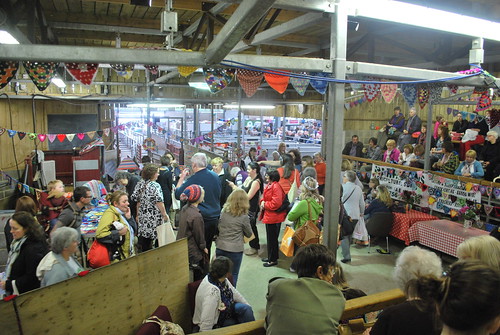
looking over this side, too...
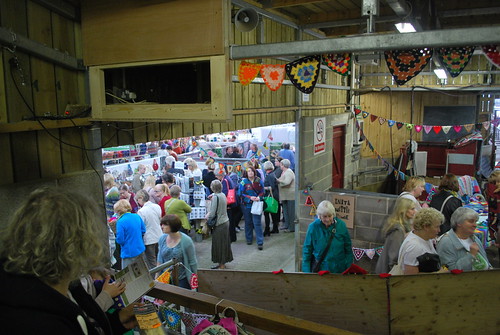
I'd have loved to have taken a group pic, but I'd have been shooting right up people's nostrils, so I didn't. It was lovely to meet Anne, André, Gina, Christine and Susan and see Jill and Brigid again!
Another couple of friends met were Nic, of the Yarns from the Plain podcast and blog, last seen during the Olympics and first met at Knit Camp in 2010; and another friend first met at Knit Camp, Ann Kingstone; here seen at her stand wearing her lovely William design, and with the Truly shawl and the Mallorn sweater behind her, as well as her range of yarns...
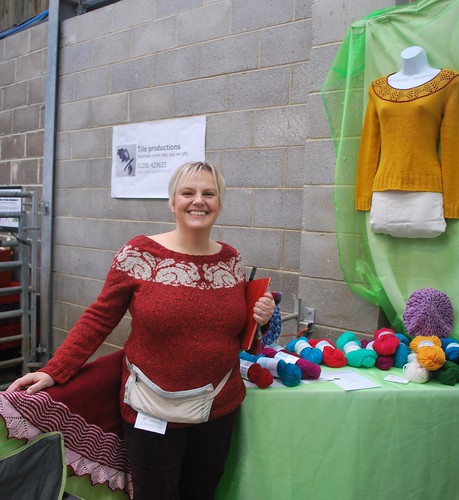
There was a lot of lovely yarnstorming in and out of the hall. I don't know who the blissful lady was, but I suspect I'd have had a similar facial expression if I'd managed to score a cuppa - it gives an idea of the decor though!
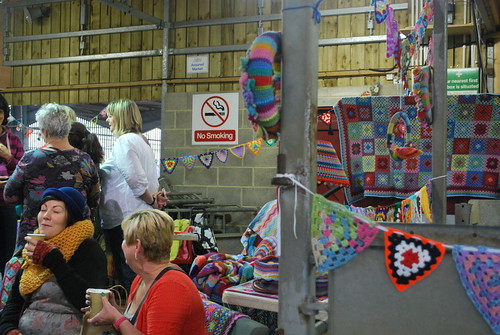
The bunting in the exhibition hall was extraordinary;

At about 2:30 I decided I'd probably seen everything I wanted to, and bought what I needed to plus a couple of slightly indulgent things (work's small annual bonus due at the end of September!) - so although I had a couple of hours before I needed to leave, I took the walk through the park, and was glad I'd done it that way round, as most of the walk (after the initial flight of steps) was downhill and I had a wheely holdall...
What had started off as a grey day was now a lovely sunny afternoon
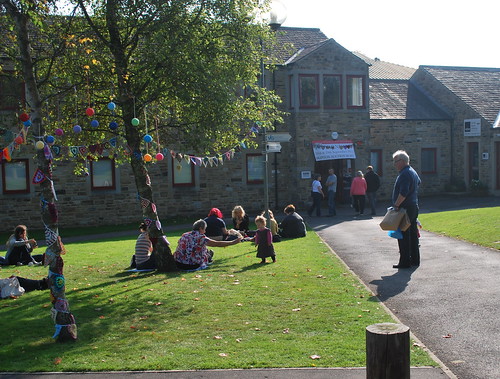
and each time I wondered if I was going the right way, there was something to guide me...
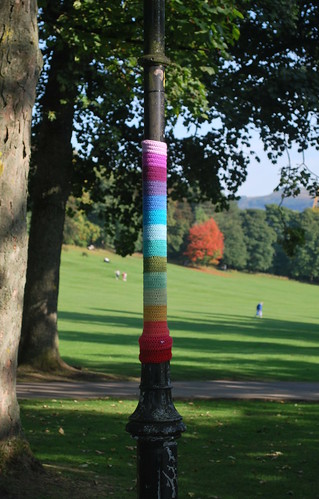
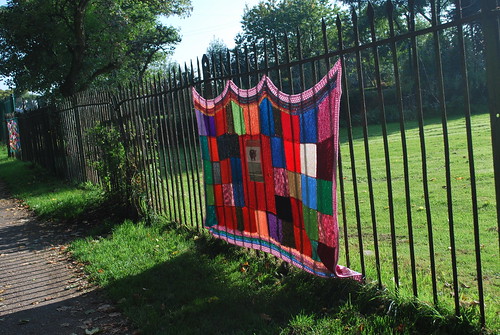
These were particularly wonderful, next to the canal bridge near the station:

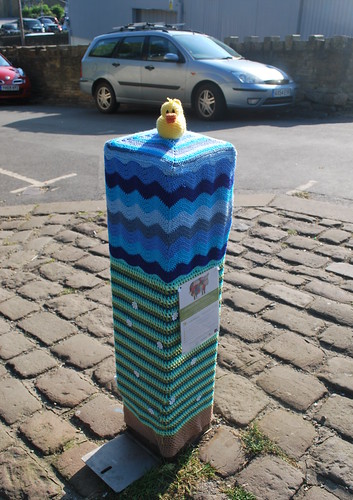
The journey back was... well; I'd have said "epic", but that implies "interesting". Which it wasn't; but I'm going to write about it anyway. Just missed a half-hourly train at Skipton, which meant that breakfast was a Snickers bar from the vending machine at 3:30; once I got to Leeds I had two hours before my onward train. They seem to be much better at letting you break your journey these days (I suspect all those shopping opportunities beyond the barriers are responsible for that) so I headed into Leeds city centre for some lunch/dinner; Bella Italia isn't my usual favourite place but it was close, and actually really nice service, even if grown men calling me "duck" isn't something I'm used to. (They were calling each other "duck", too; I hadn't nicked that bollard-cosy to wear as a hat, or anything.) Then another train from Leeds to Selby; and then the Train from Hull. Didn't bother trying to get into my reserved seat as half the train was full of football supporters celebrating a victory, and therefore Bedlam on Wheels. The detour via Lincoln and half-hour delay at Peterborough didn't help, either; but the train staff had evidently planned for this journey and had the world's largest supply of cans on board... We eventually limped into Kings Cross at 10:50pm; but at least that meant a quick trip to M&S for some milk before they closed, and catching the last (packed) train back to Kings Lynn, were still possibilities...
If that sounds like a roundabout way of doing things, your're right. The quick option is to do Skipton - Leeds - Peterborough - Ely - home. But that option was £99.50, and the perambulatory alternative (with the final London - home stage on my season ticket) was £22.90. Money saved on the trip - £76.60. When you see what I bought...

... £76.60 covers everything but the dyes; definitely worth a couple of extra hours of my time!
Clockwise from top left - two skeins of Sparkleduck Socka, which I love for its high twist, and of course Heather's beautiful colours. The purply one doesn't have a name; the green one's called "The forest began to sing". A bag of fibre from Freyalyn - oatmeal BFL and sik; colour "Sky blue"; 2 balls of King Cole Country Tweed and a set of 2.5mm Harmony needles from Knitting4Fun (I'd gone looking for exactly that sort of yarn, and a new-to-me King Cole yarn is always a bit exciting; I thought I needed the Harmonies but found the set I thought I'd lost in my bag on the way home!); 7 colours of dye from Colourcraft (I hope these are the colours I needed, but forgot to take an inventory before I went); braid of BFL from Wheeldale Woolcrafts; 4 skeins of organic merino aran yarn from John Arbon's bargain box - 400g for £12.
That little tissue-wrapped parcel nearly didn't make it home - it skippety-hoppeted out of the top of my bag on the train as I was getting up north of Cambridge, and was retrieved by a member of British Transport Police (they usually send a couple of police up on the last train home as it all gets a bit lairy at Cambridge); he asked what it was and I said "knitting wool; well, wool and angora, for knitting" - turns out I got a knitting member of BTP. He makes socks, apparently, but not boring black uniform ones... Here it is, unwrapped...

I have a small collection (3 balls) of slightly exotic stuff, none of which are quite the same thickness as each other. I'm hoping this is going to be the same weight as one of the others - I'd love a pair of nice warm gloves for this winter.
So - that was Yarndale. I'd definitely go again, particularly if it's at this time of year and I can combine it with a visit to other bits of Yorkshire - Skipton itself looked lovely, and it's been ages since I went to Bradford or Leeds; keep meaning to stop off in Saltaire at some point, too... There were teething troubles with catering and parking, but I imagine those will get themselves sorted out for next year; essentially, a really nice show.
But I met M at Yarndale; so here's Yarndale.

The night before, the Keighley Travelodge gave me a quiet evening between a visit to family and the Yarndale throng, and let me watch the first episode of this year's Strictly, and a wonderful programme about Nic Jones's return to folk-singing... Didn't find the place the first time, but having detoured mistakenly into an industrial estate I found a woman coming out of Aldi, and she gave me directions... (This is fairly standard for me if I don't have a map, and I didn't really find one I could print out...)
I went to Yarndale by public transport; this seems to have been a good move. Not least because of the yarnstormed Routemaster bus which pulled up at Skipton station entrance just as I was coming out.

There were felt panels with sheep and flowers where the ads would usually be...

I got there before the doors opened, and this also seems to have been the right thing to do. I was able to stash my bag under the Sparkleduck stand (thanks, Heather and Michael!) and could then dive in quickly and have a look around before it all got too busy.

Lovely wool, lovely fibres, lovely fleece...

And animals. These were the pretty, pretty bunnies from Bigwigs.

Can anyone help me with whose alpacas these are - they were right at the end of the arena away from the exhibition hall, near the back car-park/bus entrance? I marked them off on my programme and then promptly lost it (as seems to happen at most shows; I need to hang it round my neck on a lanyard or something). I meant to go back and get some alpaca fleece from them for spinning... Lovely bright things...
Edited to say thanks to HilltopKatie who also had a beautiful stand there; and has let me know that these are part of the Why Not Alpacas? herd.

... But the halls definitely filled up quite quickly, and then (speaking as a short person) it became somewhat difficult to see things. Sort of like the Knitting and Stitching Show but without that Huge Horrible Roaring Noise you get in the Great Hall there. There were, to be honest, some pretty rude people there; none of them, I'm sure, in this photo... More elbows than I'm used to at a fibre event other than Ally Pally, anyway!

Once I'd fought my way to one end of the building, and then been sent to the other end for (not-on-the-map) loos, and realised that breakfast wasn't going to happen because the queues were too long, I spotted Colourcraft's stand for acid dyes; after three attempts at taking payment with no signal, they went down the old-fashioned route... Then I was able to meet up with a bunch of people from the Archers group on Ravelry... We were sitting here, in one of the auction rings...

looking over this side, too...

I'd have loved to have taken a group pic, but I'd have been shooting right up people's nostrils, so I didn't. It was lovely to meet Anne, André, Gina, Christine and Susan and see Jill and Brigid again!
Another couple of friends met were Nic, of the Yarns from the Plain podcast and blog, last seen during the Olympics and first met at Knit Camp in 2010; and another friend first met at Knit Camp, Ann Kingstone; here seen at her stand wearing her lovely William design, and with the Truly shawl and the Mallorn sweater behind her, as well as her range of yarns...

There was a lot of lovely yarnstorming in and out of the hall. I don't know who the blissful lady was, but I suspect I'd have had a similar facial expression if I'd managed to score a cuppa - it gives an idea of the decor though!

The bunting in the exhibition hall was extraordinary;

At about 2:30 I decided I'd probably seen everything I wanted to, and bought what I needed to plus a couple of slightly indulgent things (work's small annual bonus due at the end of September!) - so although I had a couple of hours before I needed to leave, I took the walk through the park, and was glad I'd done it that way round, as most of the walk (after the initial flight of steps) was downhill and I had a wheely holdall...
What had started off as a grey day was now a lovely sunny afternoon

and each time I wondered if I was going the right way, there was something to guide me...


These were particularly wonderful, next to the canal bridge near the station:


The journey back was... well; I'd have said "epic", but that implies "interesting". Which it wasn't; but I'm going to write about it anyway. Just missed a half-hourly train at Skipton, which meant that breakfast was a Snickers bar from the vending machine at 3:30; once I got to Leeds I had two hours before my onward train. They seem to be much better at letting you break your journey these days (I suspect all those shopping opportunities beyond the barriers are responsible for that) so I headed into Leeds city centre for some lunch/dinner; Bella Italia isn't my usual favourite place but it was close, and actually really nice service, even if grown men calling me "duck" isn't something I'm used to. (They were calling each other "duck", too; I hadn't nicked that bollard-cosy to wear as a hat, or anything.) Then another train from Leeds to Selby; and then the Train from Hull. Didn't bother trying to get into my reserved seat as half the train was full of football supporters celebrating a victory, and therefore Bedlam on Wheels. The detour via Lincoln and half-hour delay at Peterborough didn't help, either; but the train staff had evidently planned for this journey and had the world's largest supply of cans on board... We eventually limped into Kings Cross at 10:50pm; but at least that meant a quick trip to M&S for some milk before they closed, and catching the last (packed) train back to Kings Lynn, were still possibilities...
If that sounds like a roundabout way of doing things, your're right. The quick option is to do Skipton - Leeds - Peterborough - Ely - home. But that option was £99.50, and the perambulatory alternative (with the final London - home stage on my season ticket) was £22.90. Money saved on the trip - £76.60. When you see what I bought...

... £76.60 covers everything but the dyes; definitely worth a couple of extra hours of my time!
Clockwise from top left - two skeins of Sparkleduck Socka, which I love for its high twist, and of course Heather's beautiful colours. The purply one doesn't have a name; the green one's called "The forest began to sing". A bag of fibre from Freyalyn - oatmeal BFL and sik; colour "Sky blue"; 2 balls of King Cole Country Tweed and a set of 2.5mm Harmony needles from Knitting4Fun (I'd gone looking for exactly that sort of yarn, and a new-to-me King Cole yarn is always a bit exciting; I thought I needed the Harmonies but found the set I thought I'd lost in my bag on the way home!); 7 colours of dye from Colourcraft (I hope these are the colours I needed, but forgot to take an inventory before I went); braid of BFL from Wheeldale Woolcrafts; 4 skeins of organic merino aran yarn from John Arbon's bargain box - 400g for £12.
That little tissue-wrapped parcel nearly didn't make it home - it skippety-hoppeted out of the top of my bag on the train as I was getting up north of Cambridge, and was retrieved by a member of British Transport Police (they usually send a couple of police up on the last train home as it all gets a bit lairy at Cambridge); he asked what it was and I said "knitting wool; well, wool and angora, for knitting" - turns out I got a knitting member of BTP. He makes socks, apparently, but not boring black uniform ones... Here it is, unwrapped...

I have a small collection (3 balls) of slightly exotic stuff, none of which are quite the same thickness as each other. I'm hoping this is going to be the same weight as one of the others - I'd love a pair of nice warm gloves for this winter.
So - that was Yarndale. I'd definitely go again, particularly if it's at this time of year and I can combine it with a visit to other bits of Yorkshire - Skipton itself looked lovely, and it's been ages since I went to Bradford or Leeds; keep meaning to stop off in Saltaire at some point, too... There were teething troubles with catering and parking, but I imagine those will get themselves sorted out for next year; essentially, a really nice show.
Monday, September 23, 2013
2013 books, #76-80
The chessmen, by Peter May. London: Quercus, 2013.
The final part of the Lewis trilogy; and another very good book. Fin is now working as a game warden on the local estate and finding one of the disadvantages of local knowledge; one of the trickier poachers is a schoolfriend. One day, a weird geological event leads to the discovery of a small plane they both know, with a body in it. The body's identified as their mutual friend Robbie, a musician with a now internationally-renowned band, and a man who'd disappeared 17 years before. But various things don't add up, it's immediately obvious that the body in the plane was murdered... One of the good things of signposting a series of books as a trilogy is that plots from previous books can rumble on, notably the church court case against Donald Murray for the events in The Lewis man.
Night watch, by Linda Fairstein [audiobook]. Read by Barbara Rosenblat. Rearsby, Leics.: Clipper/WF Howes, 2012.
I've listened to a couple of these so far; this one was very enjoyable for being set partly in Mougins, near Grasse in the South of France. Fairstein's style's a bit overwrought, but Rosenblat just goes with this in her superb reading, and it's all very entertaining and goes into both New York dining history and the financial business of running a restaurant.
Broken homes, by Ben Aaronovitch. London: Gollancz, 2013.
Another really excellent book in the Peter Grant series. I didn't notice whether others have had THE END on the last page, but I'm really hoping this isn't the last book - there's one huge question still to be resolved! In this one, a mutilated body is found in Crawley, and a town planner goes under a Tube train; Peter and Lesley are led to the Skygarden, a South London estate designed by an insane but idealistic architect and seemingly built for maximum discomfort. As ever, the ideas are excellent and the plot really works; and it's just incredibly funny. It riffs off all the fantasy you've read, and all the procedural thrillers, and makes something completely different. I love these books so much.
Red bones, by Ann Cleeves. London: Pan, 2010.
A young policeman discovers his grandmother Mima is dead; what looks at first like a tragic shooting accident becomes more sinister when Jimmy Perez starts to talk to the family and finds feuding and secrecy. The discovery of bones in a nearby archaeological dig and Mima's reaction to them also comes into play, and generations of secrets begin to be revealed. This is the book dramatised in the recent Shetland series, which also included a couple of Kate Davies knitted items; the book is much better than that drama, though.
The dark vineyard, by Martin Walker. London: Quercus, 2009.
The second of the Inspector Bruno books; and another good one. Bruno is called to a fire in a nearby field, to find that the field was being used as a research station for genetically modified crops. Meanwhile, an American wine conglomerate (reminiscent of the Gallo family) is trying to buy up most of the valley to create a new appélation, and Bruno is pursuing his relationship with Isabelle, with mixed results. There's a small element in the unravelling of the plot which I'd quibble with on the grounds of our not being able to make things add up, but it's a minor point...
The final part of the Lewis trilogy; and another very good book. Fin is now working as a game warden on the local estate and finding one of the disadvantages of local knowledge; one of the trickier poachers is a schoolfriend. One day, a weird geological event leads to the discovery of a small plane they both know, with a body in it. The body's identified as their mutual friend Robbie, a musician with a now internationally-renowned band, and a man who'd disappeared 17 years before. But various things don't add up, it's immediately obvious that the body in the plane was murdered... One of the good things of signposting a series of books as a trilogy is that plots from previous books can rumble on, notably the church court case against Donald Murray for the events in The Lewis man.
Night watch, by Linda Fairstein [audiobook]. Read by Barbara Rosenblat. Rearsby, Leics.: Clipper/WF Howes, 2012.
I've listened to a couple of these so far; this one was very enjoyable for being set partly in Mougins, near Grasse in the South of France. Fairstein's style's a bit overwrought, but Rosenblat just goes with this in her superb reading, and it's all very entertaining and goes into both New York dining history and the financial business of running a restaurant.
Broken homes, by Ben Aaronovitch. London: Gollancz, 2013.
Another really excellent book in the Peter Grant series. I didn't notice whether others have had THE END on the last page, but I'm really hoping this isn't the last book - there's one huge question still to be resolved! In this one, a mutilated body is found in Crawley, and a town planner goes under a Tube train; Peter and Lesley are led to the Skygarden, a South London estate designed by an insane but idealistic architect and seemingly built for maximum discomfort. As ever, the ideas are excellent and the plot really works; and it's just incredibly funny. It riffs off all the fantasy you've read, and all the procedural thrillers, and makes something completely different. I love these books so much.
Red bones, by Ann Cleeves. London: Pan, 2010.
A young policeman discovers his grandmother Mima is dead; what looks at first like a tragic shooting accident becomes more sinister when Jimmy Perez starts to talk to the family and finds feuding and secrecy. The discovery of bones in a nearby archaeological dig and Mima's reaction to them also comes into play, and generations of secrets begin to be revealed. This is the book dramatised in the recent Shetland series, which also included a couple of Kate Davies knitted items; the book is much better than that drama, though.
The dark vineyard, by Martin Walker. London: Quercus, 2009.
The second of the Inspector Bruno books; and another good one. Bruno is called to a fire in a nearby field, to find that the field was being used as a research station for genetically modified crops. Meanwhile, an American wine conglomerate (reminiscent of the Gallo family) is trying to buy up most of the valley to create a new appélation, and Bruno is pursuing his relationship with Isabelle, with mixed results. There's a small element in the unravelling of the plot which I'd quibble with on the grounds of our not being able to make things add up, but it's a minor point...
Saturday, August 31, 2013
2013 books, #71-75
My father and other working-class football heroes, by Gary Imlach. London: Yellow Jersey Press, 2006.
This is a wonderful book. Gary's father Stewart Imlach played in a cup-winning team for Notts Forest, and in a World Cup for Scotland, in the 1950s. After Stewart's death, Gary realises that he knows much too little about his father's life and times, and goes to investigate. What results is a picture of English and Scottish football of the 1950s and early 60s, and the vast gulf between these professionals and contemporary footballers. Gary Imlach is an excellent sports journalist, particularly known for his cycling coverage, and managed to draw me in to that sport; it shouldn't really be a surprise that he had me completely absorbed by football half a century ago, but this is definitely one for anyone interested in social history or family research, whether interested in football or not.
Compulsion, by Jonathan Kellerman [audiobook]. Read by Jeff Harding. Oxford: Isis, 2008.
Really couldn't get into this one, and thought the plot was a bit of a mess. Jeff Harding's reading meant I'd go through to the end with it, but really, I couldn't do a proper summary of this one. If you like Alex and Milo working as a team, it's probably an OK one, but I couldn't get enthusiastic about it...
A faint cold fear, by Karin Slaughter. London: Arrow, 2004.
Sara Linton is called to the local college campus to examine the body of a young man who has apparently jumped off a bridge into the lake; while Sara is engaged in this, her heavily-pregnant sister Tessa is brutally attacked. Sara and estranged husband Jeffrey investigate, but their task isn't helped by former policewoman Lena Adams, now a security guard from the college, who appears to be hiding things. Very good, tightly-plotted novel; one slight whinge is the late discovery of something the readers couldn't have been expected to guess (is there a technical word for this?), but the result is satisfying enough that this isn't overly annoying...
Savage moon, by Chris Simms [audiobook]. Read by Toby Longworth. Bath: BBC/Chivers, 2008.
I was beginning to think I'd gone off audiobooks after several I couldn't really concentrate on; not this one, though. Something, or someone, is killing and savaging people in the Saddleworth Moor area where there have been mysterious sightings of a large black cat. The victims are found with their throats ripped out and clutching long black hairs. DI Jon Spicer is unconvinced by the big cat theory, and finds himself hunting down a killer; meanwhile, he's worried about his wife, who is becoming obsessed by civilian deaths in Iraq and may not be coping with their new baby. Toby Longworth's reading is as good as you'd expect from this veteran of the BBC radio theatre company.
Bruno, chief of police, by Martin Walker. London: Quercus, 2008.
I heard about this series on Radio 4's Food programme, due to the concentration there is on the food of the area. When that area's Périgord, it makes for excellent reading and eating... At first, I wondered if this series was going to be rather like the Hamish Macbeth books; but there's a harder edge to these, both in subject-matter and in a lack of romanticism where it matters. The local mayor, for instance, could be a comic figure, but turns out to be an énarque with his fingers in many important political pies; and the eventual dénouement of the plot is buried deep in France's history of racial and political tension. I'll certainly be reading more of these; it's an area I love and there are some very engaging characters here.
This is a wonderful book. Gary's father Stewart Imlach played in a cup-winning team for Notts Forest, and in a World Cup for Scotland, in the 1950s. After Stewart's death, Gary realises that he knows much too little about his father's life and times, and goes to investigate. What results is a picture of English and Scottish football of the 1950s and early 60s, and the vast gulf between these professionals and contemporary footballers. Gary Imlach is an excellent sports journalist, particularly known for his cycling coverage, and managed to draw me in to that sport; it shouldn't really be a surprise that he had me completely absorbed by football half a century ago, but this is definitely one for anyone interested in social history or family research, whether interested in football or not.
Compulsion, by Jonathan Kellerman [audiobook]. Read by Jeff Harding. Oxford: Isis, 2008.
Really couldn't get into this one, and thought the plot was a bit of a mess. Jeff Harding's reading meant I'd go through to the end with it, but really, I couldn't do a proper summary of this one. If you like Alex and Milo working as a team, it's probably an OK one, but I couldn't get enthusiastic about it...
A faint cold fear, by Karin Slaughter. London: Arrow, 2004.
Sara Linton is called to the local college campus to examine the body of a young man who has apparently jumped off a bridge into the lake; while Sara is engaged in this, her heavily-pregnant sister Tessa is brutally attacked. Sara and estranged husband Jeffrey investigate, but their task isn't helped by former policewoman Lena Adams, now a security guard from the college, who appears to be hiding things. Very good, tightly-plotted novel; one slight whinge is the late discovery of something the readers couldn't have been expected to guess (is there a technical word for this?), but the result is satisfying enough that this isn't overly annoying...
Savage moon, by Chris Simms [audiobook]. Read by Toby Longworth. Bath: BBC/Chivers, 2008.
I was beginning to think I'd gone off audiobooks after several I couldn't really concentrate on; not this one, though. Something, or someone, is killing and savaging people in the Saddleworth Moor area where there have been mysterious sightings of a large black cat. The victims are found with their throats ripped out and clutching long black hairs. DI Jon Spicer is unconvinced by the big cat theory, and finds himself hunting down a killer; meanwhile, he's worried about his wife, who is becoming obsessed by civilian deaths in Iraq and may not be coping with their new baby. Toby Longworth's reading is as good as you'd expect from this veteran of the BBC radio theatre company.
Bruno, chief of police, by Martin Walker. London: Quercus, 2008.
I heard about this series on Radio 4's Food programme, due to the concentration there is on the food of the area. When that area's Périgord, it makes for excellent reading and eating... At first, I wondered if this series was going to be rather like the Hamish Macbeth books; but there's a harder edge to these, both in subject-matter and in a lack of romanticism where it matters. The local mayor, for instance, could be a comic figure, but turns out to be an énarque with his fingers in many important political pies; and the eventual dénouement of the plot is buried deep in France's history of racial and political tension. I'll certainly be reading more of these; it's an area I love and there are some very engaging characters here.
Friday, August 30, 2013
Postscript
Seamus Heaney, 13 April 1939 - 30 August 2013
Saddened and surprised to hear of Seamus Heaney's death today. I still have the much-annotated A-level Selected poems 1965-1975*, and have continued to read and collect his poems and essays over the nearly 30 years since. Stepping stones is still sitting on the "unread" pile on the piano.I have too many favourites; but I love the last lines of this, as someone who spends too little time living in the moment.
Postscript
And some time make the time to drive out west
Into County Clare, along the Flaggy Shore,
In September or October, when the wind
And the light are working off each other
So that the ocean on one side is wild
With foam and glitter, and inland among stones
The surface of a slate-grey lake is lit
By the earthed lightening of flock of swans,
Their feathers roughed and ruffling, white on white,
Their fully-grown headstrong-looking heads
Tucked or cresting or busy underwater.
Useless to think you'll park or capture it
More thoroughly. You are neither here nor there,
A hurry through which known and strange things pass
As big soft buffetings come at the car sideways
And catch the heart off guard and blow it open
From The spirit level, 1996.
*One of the first things I knew about Heaney was that he was prepared to engage with his readers; my English teacher had been to several talks he'd given, and when we had a somewhat lively dispute in one lesson on what was meant in a particular poem, Mr Doyle wrote to Heaney asking which version was right, thinking that he might answer. A month or two later, there was a reply; neither version was what Heaney had been thinking while writing the poem, but both were really interesting interpretations; and he added that we sounded like a fun group to teach. Lessons learned: a) authors are actual people who sometimes write back; and b) this writing and reading thing is a two-way street. Now, in the age of interactivity, both are somewhat taken for granted; then, it felt like a total revelation.
Sunday, August 18, 2013
2013 books, #66-70
On Canaan's side, by Sebastian Barry. London: Faber and Faber, 2011.
Lilly and her fiancé Tadg flee Ireland for America; Tadg is in the Black-and-Tans and has been put onto a death-list by Republicans for alleged atrocities. Seven decades later, Lilly tries to make sense of her life as an 89-year old, in the context of the death of her soldier grandson. Lilly's story mirrors the history of the twentieth century, but weaves obliquely in and out of it. This is a sad, sad book, with luminous moments of language. Lilly is an everywoman, present at the Easter Rising, with a brother in WWI, a friend in WWII, an employer involved in the Civil Rights movement, a son in Vietnam and a grandson in the Gulf War; and still remains somehow wrapped in her own cocoon. There is so much loneliness here... and, if you're me, quite a lot of frustration at Lilly's lack of curiosity about the world around her... Barry's skill at writing a first-person female narrative is impressive, though.
The kill room, by Jeffery Deaver. London: Hodder, 2013.
A Lincoln Rhyme/Amelia Sach book; and another excellent one. An anti-globalisation activist is killed in the Bahamas, and an assistant district attorney comes to Rhyme saying she wants to prosecute the head of an ultra-secret government agency for commissioning the death. Rhyme can't mobilise his usual forces, but Lon Selitto is never averse to working as a double agent, and there's an excellent new character, a police sergeant in the Bahamas. Meanwhile, someone is working to get Sach out of the police force on medical disability, and Rhyme has surgery of his own to face. As ever, Deaver merges the personal and the criminal, but this time it has a twist of the post-9/11 political, too. And as ever, there are twists, turns, and false alarms; increasingly, he's taking you along with these as a knowing participant. Most of the time.
Gone tomorrow, by Lee Child. London: Bantam, 2009.
After about two pages of this, I realised I'd already read it. Or had had it read to me. I see I completely failed to register any plot details that time round... The initial scene is extraordinarily arresting, and somewhat terrifying. After that, the rest of the plot is slightly amorphous; there are atrocities in Afghanistan, there are killings in New York, but the reason I couldn't remember what happened is that once you get onto the plot track, there's one seismic shock, but it has a lot less in the way of plot than most of the Jack Reacher books do. A good read for all of that. Again.
Dead man's time, by Peter James. London: Macmillan, 2013.
Creepy one, this. We already know that an ex-convict and Roy Grace's ex-wife are moving closer and closer to him, his new wife Cleo and their infant son Noah. In the middle of this slow burn, a 98-year-old woman is tortured to death in her home while an estimated £10 million of antiques are stolen, and her 95-year-old brother, an equally wealthy antiques dealer, is using his connections to find and punish the people responsible. The story starts in the early 20s in New York, and the stories are intertwined; I think I enjoyed this even more than the last couple of Roy Grace novels.
Six years, by Harlan Coben [audiobook]. Read by Kerry Shale. Rearsby, Leics.: Clipper, 2013.
The love of Jake Fisher's life, Natalie, married another man six years before the story starts. When Fisher comes across the husband's obituary, he can't stay away and attends the funeral. But the grieving widow isn't Natalie. As Jake investigates, he finds that the more he discovers, the less he knows - and there are a number of people who are extremely keen to keep him in ignorance. This is Coben at his best - you're as lost as Jake is, and each time a new explanation seems to work, it gets darker and darker. An excellent reading by Kerry Shale, justifying his near-national-treasure status again...
Lilly and her fiancé Tadg flee Ireland for America; Tadg is in the Black-and-Tans and has been put onto a death-list by Republicans for alleged atrocities. Seven decades later, Lilly tries to make sense of her life as an 89-year old, in the context of the death of her soldier grandson. Lilly's story mirrors the history of the twentieth century, but weaves obliquely in and out of it. This is a sad, sad book, with luminous moments of language. Lilly is an everywoman, present at the Easter Rising, with a brother in WWI, a friend in WWII, an employer involved in the Civil Rights movement, a son in Vietnam and a grandson in the Gulf War; and still remains somehow wrapped in her own cocoon. There is so much loneliness here... and, if you're me, quite a lot of frustration at Lilly's lack of curiosity about the world around her... Barry's skill at writing a first-person female narrative is impressive, though.
The kill room, by Jeffery Deaver. London: Hodder, 2013.
A Lincoln Rhyme/Amelia Sach book; and another excellent one. An anti-globalisation activist is killed in the Bahamas, and an assistant district attorney comes to Rhyme saying she wants to prosecute the head of an ultra-secret government agency for commissioning the death. Rhyme can't mobilise his usual forces, but Lon Selitto is never averse to working as a double agent, and there's an excellent new character, a police sergeant in the Bahamas. Meanwhile, someone is working to get Sach out of the police force on medical disability, and Rhyme has surgery of his own to face. As ever, Deaver merges the personal and the criminal, but this time it has a twist of the post-9/11 political, too. And as ever, there are twists, turns, and false alarms; increasingly, he's taking you along with these as a knowing participant. Most of the time.
Gone tomorrow, by Lee Child. London: Bantam, 2009.
After about two pages of this, I realised I'd already read it. Or had had it read to me. I see I completely failed to register any plot details that time round... The initial scene is extraordinarily arresting, and somewhat terrifying. After that, the rest of the plot is slightly amorphous; there are atrocities in Afghanistan, there are killings in New York, but the reason I couldn't remember what happened is that once you get onto the plot track, there's one seismic shock, but it has a lot less in the way of plot than most of the Jack Reacher books do. A good read for all of that. Again.
Dead man's time, by Peter James. London: Macmillan, 2013.
Creepy one, this. We already know that an ex-convict and Roy Grace's ex-wife are moving closer and closer to him, his new wife Cleo and their infant son Noah. In the middle of this slow burn, a 98-year-old woman is tortured to death in her home while an estimated £10 million of antiques are stolen, and her 95-year-old brother, an equally wealthy antiques dealer, is using his connections to find and punish the people responsible. The story starts in the early 20s in New York, and the stories are intertwined; I think I enjoyed this even more than the last couple of Roy Grace novels.
Six years, by Harlan Coben [audiobook]. Read by Kerry Shale. Rearsby, Leics.: Clipper, 2013.
The love of Jake Fisher's life, Natalie, married another man six years before the story starts. When Fisher comes across the husband's obituary, he can't stay away and attends the funeral. But the grieving widow isn't Natalie. As Jake investigates, he finds that the more he discovers, the less he knows - and there are a number of people who are extremely keen to keep him in ignorance. This is Coben at his best - you're as lost as Jake is, and each time a new explanation seems to work, it gets darker and darker. An excellent reading by Kerry Shale, justifying his near-national-treasure status again...
Wednesday, August 07, 2013
Hatopia
Contributing to the announcement of a new collection by Woolly Wormhead. But this one, with a difference.
People who follow Woolly's blog will find mentions of the community in northern Italy she and her family moved to several years ago. Now that community is threatened by the actions of one local person, and its residents, many of them artists, face substantial legal fees in their battle to remain and preserve the artworks around the site.
So, what do you do as a designer when faced with that sort of fundraising challenge? You put together a collection, and donate the proceeds to the fund.
And a fine collection it is (as copy-editor, I had a sneak preview, obviously!). I've only knitted two of these, Encircle:
(Silvia rocks this design above - this is my more staid and much more fluffy version below)
and Pavone (Italian for peacock)
(Sara wearing a less drapy version than the one I test-knitted, modelled by Anya against the background of the building we work in)
I can attest to the excellence of both. Looking forward to choosing the next one...
You can buy the collection through Ravelry (recommended if you're a member - then it's in your library and you can print out bits and bobs as you need them); if you're not a Ravelry member, you can also get it via Woolly's website.
I'm going to finish with the words of the community in their Statement. And when you've read it, if you want to know more and offer support, there's a Facebook page; and there's a petition at Change.org, and the Twitter hashtag in English is #savemutonia.
Our Statement
The Mutoid Waste Company arrived in Santarcangelo di Romagna, Italy in 1990 to perform in that year's "Festival Dei Teatri", a renowned annual festival held in the town. From that time on Santarcangelo became a base for the group and it became their home. Their art, their way of life and they themselves became an accepted part of life in Santarcangelo. Over the last 23 years they have increasingly collaborated on projects with local institutions such as schools, and their ties with the local community have strengthened. In recent years some of the Mutoids have chosen the Yard as a safe place to raise their own children.
The Yard is unique: a place that follows the rules whilst living completely outside them, a place that advocates an alternative outlook on life, a place that allows people to discover new things - and it's wonderful that such a place is considered a true part of Santarcangelo and that the locals readily accept the Yard as part of their community.
Unfortunately the Yard currently finds itself under a very real and serious threat of eviction - a reality which would not only destroy this unique community but also disperse its inhabitants and their artwork.
Despite these many years of mutually respectful cohabitation there is one voice that has continually spoken against the Mutoids presence; a single objector who now seriously threatens this culturally important phenomenon.
Mutonia is not a campsite (even though its inhabitants live in caravans, buses, trucks and temporary constructions that look more like works of art than houses); it's not a standard travellers site (although many of its inhabitants have a semi-nomadic lifestyle); and the group have never illegally occupied the land.
In recent years Santarcangelo's local council has been searching for a solution to the situation, seeking help from other government bodies, with the ultimate aim of declaring the Mutoid Yard as a Site of Cultural Interest.
People who follow Woolly's blog will find mentions of the community in northern Italy she and her family moved to several years ago. Now that community is threatened by the actions of one local person, and its residents, many of them artists, face substantial legal fees in their battle to remain and preserve the artworks around the site.
So, what do you do as a designer when faced with that sort of fundraising challenge? You put together a collection, and donate the proceeds to the fund.
And a fine collection it is (as copy-editor, I had a sneak preview, obviously!). I've only knitted two of these, Encircle:
(Silvia rocks this design above - this is my more staid and much more fluffy version below)
and Pavone (Italian for peacock)
(Sara wearing a less drapy version than the one I test-knitted, modelled by Anya against the background of the building we work in)
I can attest to the excellence of both. Looking forward to choosing the next one...
You can buy the collection through Ravelry (recommended if you're a member - then it's in your library and you can print out bits and bobs as you need them); if you're not a Ravelry member, you can also get it via Woolly's website.
I'm going to finish with the words of the community in their Statement. And when you've read it, if you want to know more and offer support, there's a Facebook page; and there's a petition at Change.org, and the Twitter hashtag in English is #savemutonia.
Our Statement
The Mutoid Waste Company arrived in Santarcangelo di Romagna, Italy in 1990 to perform in that year's "Festival Dei Teatri", a renowned annual festival held in the town. From that time on Santarcangelo became a base for the group and it became their home. Their art, their way of life and they themselves became an accepted part of life in Santarcangelo. Over the last 23 years they have increasingly collaborated on projects with local institutions such as schools, and their ties with the local community have strengthened. In recent years some of the Mutoids have chosen the Yard as a safe place to raise their own children.
The Yard is unique: a place that follows the rules whilst living completely outside them, a place that advocates an alternative outlook on life, a place that allows people to discover new things - and it's wonderful that such a place is considered a true part of Santarcangelo and that the locals readily accept the Yard as part of their community.
Unfortunately the Yard currently finds itself under a very real and serious threat of eviction - a reality which would not only destroy this unique community but also disperse its inhabitants and their artwork.
Despite these many years of mutually respectful cohabitation there is one voice that has continually spoken against the Mutoids presence; a single objector who now seriously threatens this culturally important phenomenon.
Mutonia is not a campsite (even though its inhabitants live in caravans, buses, trucks and temporary constructions that look more like works of art than houses); it's not a standard travellers site (although many of its inhabitants have a semi-nomadic lifestyle); and the group have never illegally occupied the land.
In recent years Santarcangelo's local council has been searching for a solution to the situation, seeking help from other government bodies, with the ultimate aim of declaring the Mutoid Yard as a Site of Cultural Interest.
Photos in this post copyright (c) Woolly Wormhead (1, 2, 4), (c) Franklin Habit (3) (c) Liz Marley (5).
Thursday, August 01, 2013
2013 books, #61-65
On the road bike: the search for a nation's cycling soul, or, Sniffing the yak-skin shoe, or, The great eccentrics of British cycling, by Ned Boulting. London: Yellow Jersey Press, 2013.
This is another lovely book by Ned Boulting. Taking 2012's Tour de France victory by Bradley Wiggins as its starting point, it looks at the people who quietly, doggedly kept British cycling going over the years before this recent trend, in near-invisibility. He talks to people you'd expect - Chris Boardman, for whom he has a huge respect belied by their banter on the ITV4 coverage and podcasts, and David Millar. But he also talks to David Millar's mum; and Ken Livingstone, about cycling in London; and finds there are two Tommy Godwins, very different personalities but champions at the same time; and interviews professional cyclists from the 1950s, 60s and 70s only real aficionados would previously have heard of. Oh, and he goes for a ride with Gary Kemp out of Spandau Ballet and his New Romantic Ride; sort of.
Boulting's not a technical nerd - he's quite happy to admit that he glazes over when people start talking about gear ratios and bottom brackets, and is probably the only person whose puncture Chris Boardman's mended in the last few years - and he came to the sport at the elite level with Tour de France punditry, and only later got back on his bike and started cycling seriously. He still regards himself as an outsider to the sport, and is therefore able to explain beautifully to other outsiders. He's genuinely fascinated by people, what drives them, and their stories, and plays this wonderfully here. If you like Stuart Maconie's books about Britain, I suspect you'll enjoy this one very much - the same sort of affectionate, humorous curiosity and genuine respect for endurance and eccentricity is at work.
Sample (from about two-thirds of the way through): In 1937, Ossie set out to reclaim his record. At exactly the same time an English resident, a Frenchman of Scottish descent (I am not making these people up) called René Menzies launched his campaign. Ossie prevailed, riding a staggering 62,657 miles, beating Menzies by just 1,096 miles. Intriguingly, although scarcely of any relevance, Menzies, who had been decorated for valour in the First World War, went on to become Charles de Gaulle's chauffeur during the next war, a bizarre biographical detail which, by now, probably won't surprise you.
Force of nature, by C. J. Box. Kindle edition.
The third of the Lyon books, and another crackingly good Joe Pickett novel. I think I've said everything there is to say about these over the years, but the way Box keeps producing a consistently high, interesting standard of novel is quite stunning. Again, the theme is very much what people will do when forced to the edge, and as this one focuses on Nate Romanowski and his history in Special Forces, it can be a pretty gory read. Box keeps the characters straight and consistent, though, and the mystery which is set up in Cold wind is finally explained.
The bomber, by Liza Marklund. London: Corgi, 2011.
Can't remember how I came to order this one from the library, but if someone reading this recommended it, thank you! Stockholm is hosting the Olympics, but there's an explosion in the main arena; when all the pieces are collected and DNS analysis is done, the victim turns out to be the head of SOCOG, a former banker. As Annika Bengtzon of the Stockholm evening paper investigates, she discovers a curious absence in the accounts of the victim's life - her husband speaks of her as if he were her PR, and her daughter with hatred. Sources are also telling her that this was an inside job, not international terrorism. And then the bomber strikes again... Tautly plotted and an excellent read.
Maxwell's island, by M J Trow. London: Allison and Busby, [2011].
Picked this up at the library when I realised I was going to be handing in all my reading material; I love these books. Maxwell is at his hilarious best in this one, which involves him, Jacquie and son Nolan reluctantly leading a Year Seven school trip to the Isle of Wight after another member of staff falls down some stairs. This is not the only mishap to befall the cast of this book, and it turns out that the Year Sevens are the least of everyone's problems. There's a huge great plot-plant at the end - one of those things you couldn't possibly have worked out from the previous information in the book - so if you don't like those, you're forewarned; but to be honest, that isn't what you read these for...
Time bomb, by Jonathan Kellerman [audiobook]. Read by Jeff Harding. Oxford: Isis, 2009. [Originally published 1999.]
I'm not the world's biggest fan of Alex Delaware (Kellerman's main protagonist), it has to be said. I picked this one up because I just love the sound of Jeff Harding's voice. But this has an excellent plot, with twists and turns, and a lot to think about. Here, a seemingly straightforward school shooting turns into something very different, and Delaware and Milo are drawn into something horrible and sinister. If you're a conspiracy theorist, this is the one for you. If you're not, it's still pretty diverting.
This is another lovely book by Ned Boulting. Taking 2012's Tour de France victory by Bradley Wiggins as its starting point, it looks at the people who quietly, doggedly kept British cycling going over the years before this recent trend, in near-invisibility. He talks to people you'd expect - Chris Boardman, for whom he has a huge respect belied by their banter on the ITV4 coverage and podcasts, and David Millar. But he also talks to David Millar's mum; and Ken Livingstone, about cycling in London; and finds there are two Tommy Godwins, very different personalities but champions at the same time; and interviews professional cyclists from the 1950s, 60s and 70s only real aficionados would previously have heard of. Oh, and he goes for a ride with Gary Kemp out of Spandau Ballet and his New Romantic Ride; sort of.
Boulting's not a technical nerd - he's quite happy to admit that he glazes over when people start talking about gear ratios and bottom brackets, and is probably the only person whose puncture Chris Boardman's mended in the last few years - and he came to the sport at the elite level with Tour de France punditry, and only later got back on his bike and started cycling seriously. He still regards himself as an outsider to the sport, and is therefore able to explain beautifully to other outsiders. He's genuinely fascinated by people, what drives them, and their stories, and plays this wonderfully here. If you like Stuart Maconie's books about Britain, I suspect you'll enjoy this one very much - the same sort of affectionate, humorous curiosity and genuine respect for endurance and eccentricity is at work.
Sample (from about two-thirds of the way through): In 1937, Ossie set out to reclaim his record. At exactly the same time an English resident, a Frenchman of Scottish descent (I am not making these people up) called René Menzies launched his campaign. Ossie prevailed, riding a staggering 62,657 miles, beating Menzies by just 1,096 miles. Intriguingly, although scarcely of any relevance, Menzies, who had been decorated for valour in the First World War, went on to become Charles de Gaulle's chauffeur during the next war, a bizarre biographical detail which, by now, probably won't surprise you.
Force of nature, by C. J. Box. Kindle edition.
The third of the Lyon books, and another crackingly good Joe Pickett novel. I think I've said everything there is to say about these over the years, but the way Box keeps producing a consistently high, interesting standard of novel is quite stunning. Again, the theme is very much what people will do when forced to the edge, and as this one focuses on Nate Romanowski and his history in Special Forces, it can be a pretty gory read. Box keeps the characters straight and consistent, though, and the mystery which is set up in Cold wind is finally explained.
The bomber, by Liza Marklund. London: Corgi, 2011.
Can't remember how I came to order this one from the library, but if someone reading this recommended it, thank you! Stockholm is hosting the Olympics, but there's an explosion in the main arena; when all the pieces are collected and DNS analysis is done, the victim turns out to be the head of SOCOG, a former banker. As Annika Bengtzon of the Stockholm evening paper investigates, she discovers a curious absence in the accounts of the victim's life - her husband speaks of her as if he were her PR, and her daughter with hatred. Sources are also telling her that this was an inside job, not international terrorism. And then the bomber strikes again... Tautly plotted and an excellent read.
Maxwell's island, by M J Trow. London: Allison and Busby, [2011].
Picked this up at the library when I realised I was going to be handing in all my reading material; I love these books. Maxwell is at his hilarious best in this one, which involves him, Jacquie and son Nolan reluctantly leading a Year Seven school trip to the Isle of Wight after another member of staff falls down some stairs. This is not the only mishap to befall the cast of this book, and it turns out that the Year Sevens are the least of everyone's problems. There's a huge great plot-plant at the end - one of those things you couldn't possibly have worked out from the previous information in the book - so if you don't like those, you're forewarned; but to be honest, that isn't what you read these for...
Time bomb, by Jonathan Kellerman [audiobook]. Read by Jeff Harding. Oxford: Isis, 2009. [Originally published 1999.]
I'm not the world's biggest fan of Alex Delaware (Kellerman's main protagonist), it has to be said. I picked this one up because I just love the sound of Jeff Harding's voice. But this has an excellent plot, with twists and turns, and a lot to think about. Here, a seemingly straightforward school shooting turns into something very different, and Delaware and Milo are drawn into something horrible and sinister. If you're a conspiracy theorist, this is the one for you. If you're not, it's still pretty diverting.
Tuesday, July 30, 2013
Lyon, days 4 and 5
I've a week off this week, and one of the things I've vowed to do is catch up with blog posts, and projects on Ravelry, and paperwork, and do a bit of prospective stuff for a decorating project later in the summer... So finally, last part of the Lyon saga...
Friday, bright(ish) and early(ish), I set off for the basilica at Fourvières. You can see it from a distance on the first picture of the previous Lyon post, sitting there at the top of the hill like a wedding cake...
I was hoping for High 19th-century Camp, mixed with some art nouveau. I was not to be disappointed, even before I got into the building.
The basilica was erected by the grateful Lyonnais immediately after the Franco-Prussian war in 1870-71, to give thanks to God for having escaped the Prussian invasion. It dates from about the same time as the Sacré-Coeur in Paris, and it has that same quality of no small space being missed
Doves of various kinds are to the fore...
The floor mosaics were rather beautiful...
... as were both the windows and the modern light fittings
The wall mosaics were beautifully done, too;
and, as inevitable in late 19th century France, Joan of Arc is prominantly featured as a symbol of French pride.
Anyway. It was lovely. If, to quote a friend, you like that sort of thing, of course.
Outside, rather a cheery statue of pope JPII, and a great view over the city.
Back down in the funicular to Vieux-Lyon; definitely the right day to see it. For the first time, I did actually feel as if I was in Southern France.
Another cathedral, but this one was under renovation - the only thing showing behind the altar, on a white sheet, was an enormous QR code, which would presumably give helpful information to someone not equipped with a £10 pay-as-you-go Nokia...
Pretty streets...
Here's the guy - Louis Janmot, from a self-portrait.
There's a book available about the cycle, which I was able to buy in the museum bookshop... I wandered round the rest of the galleries like a stunned fish, went back to the Janmot room and spent another 15 mins or so gazing and attempting not to dribble too obviously, and then wandered out; although it was drizzling again, the Place de l'Hôtel de Ville beckoned
and I had an apéro under the awnings there before heading home - more grilled meat and veg...

The following day, it was just a matter of collecting together the souvenirs and heading home...
Lovely city. I'll definitely be back.
Friday, bright(ish) and early(ish), I set off for the basilica at Fourvières. You can see it from a distance on the first picture of the previous Lyon post, sitting there at the top of the hill like a wedding cake...
I was hoping for High 19th-century Camp, mixed with some art nouveau. I was not to be disappointed, even before I got into the building.
The basilica was erected by the grateful Lyonnais immediately after the Franco-Prussian war in 1870-71, to give thanks to God for having escaped the Prussian invasion. It dates from about the same time as the Sacré-Coeur in Paris, and it has that same quality of no small space being missed
Doves of various kinds are to the fore...
The floor mosaics were rather beautiful...
... as were both the windows and the modern light fittings
The wall mosaics were beautifully done, too;
and, as inevitable in late 19th century France, Joan of Arc is prominantly featured as a symbol of French pride.
Outside, rather a cheery statue of pope JPII, and a great view over the city.
Back down in the funicular to Vieux-Lyon; definitely the right day to see it. For the first time, I did actually feel as if I was in Southern France.
Pretty streets...
After a rather over-copious and slightly-too-touristy lunch (live and learn!) I ambled back into the middle of town and sat in a café for a while, before finding a yarn shop (yay!!) and making my way to the art gallery. Outside in the square, this statue
Final stop then, the Musée des Beaux-Arts de Lyon
By this time I was, quite frankly, all sightseen-out. But I had a pass which got me in free, and an hour to spare, and there I was; so my plan was to tander through, and if something totally grabbed me by the throat and said LOOK AT ME I'd have a look; but if not, I'd just have a canter through, and a better look next time I come to Lyon. I'm not a complete masochist, though, so I started with the 19th century paintings rather than looking at armour and stuff..
And the first room I came across was the Salle Janmot.
Thud. Love at first sight.
Completely new-to-me Pre-Raphaelite-type painter (technically, apparently, a Romantic/Symbolist, and a formative influence on one of my other favourites, Odilon Redon) - and an entire cycle (Le poème de l'âme/The poem of the soul) in one room. The most beautiful things.
There's a book available about the cycle, which I was able to buy in the museum bookshop... I wandered round the rest of the galleries like a stunned fish, went back to the Janmot room and spent another 15 mins or so gazing and attempting not to dribble too obviously, and then wandered out; although it was drizzling again, the Place de l'Hôtel de Ville beckoned
and I had an apéro under the awnings there before heading home - more grilled meat and veg...

The following day, it was just a matter of collecting together the souvenirs and heading home...
Subscribe to:
Posts (Atom)

